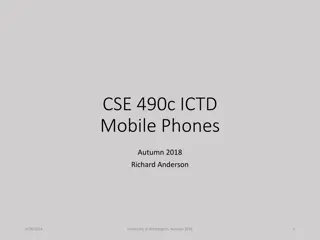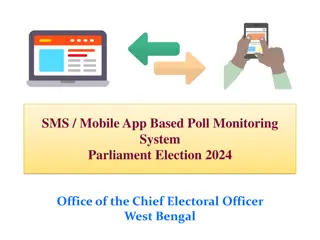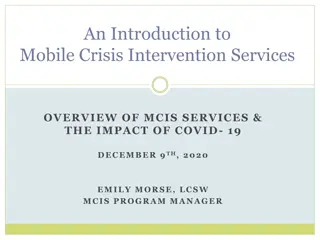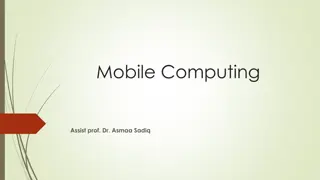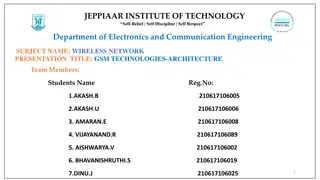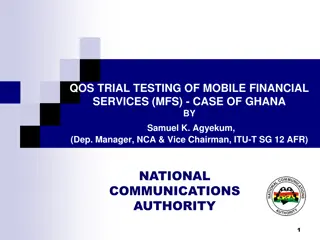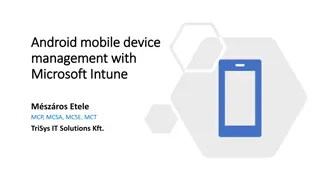Mobile repairing course in Karol bagh
Mobile repairing course become the best mobile repairing engineer in just 90 days and earn 40 to 50 thousand per month!!nWhy you should join hitech ?n-free advance toolkitn-free study material n-free circuit chart and bagn-free Oca course n-fre
Download Presentation

Please find below an Image/Link to download the presentation.
The content on the website is provided AS IS for your information and personal use only. It may not be sold, licensed, or shared on other websites without obtaining consent from the author. Download presentation by click this link. If you encounter any issues during the download, it is possible that the publisher has removed the file from their server.
E N D
Presentation Transcript
The Evolution of Mobile Phone Technology: From Brick Phones to Smart Wonders Mobile phone technology has come a long waysince the days when cell phones were the size of bricks and only capable of making calls.As we stand on the brink of even more exciting innovations, it s fascinating to look back at how mobile phones have evolved and consider what the future might hold.This blog will take you on a journey through the history, advancements, and future of mobile phone technology. 1. The Dawn of Mobile Communication The journey of mobile phone technology began in the 1970s with the advent of the first mobile phones. In 1973, Martin Cooper of Motorola made the first handheld mobile phone call using the DynaTAC 8000X, a device that weighed around 2.5 pounds and offered a talk time of just 30 minutes. This early model, often referred to as the brick phone, was revolutionary but remained a luxury item due to its high cost and bulky size. 2. The Rise of Feature Phones The 1990s marked the beginning of a new era in mobile communication with the introduction of feature phones. These phones were smaller, lighter, and more affordable than their predecessors.They featured a physical keypad, monochrome or basic color screens, and offered text messaging (SMS) and
basic games like Snake. Companies like Nokia and Ericsson dominated this era with their robust, reliable, and user-friendly devices. 3. The Smartphone Revolution The turn of the millennium brought about a seismic shift in mobile phone technology with the advent of smartphones. The introduction of the first iPhone byApple in 2007 was a game-changer. It combined a touch-sensitive screen with a sleek design, doing away with physical keyboards and offering a rich multimedia experience. The iPhone s success set the stage for the proliferation of smartphones, leading to the rise ofAndroid and other operating systems. Smartphones are characterized by their powerful processors, high-resolution touch screens, and a wide array of features including advanced cameras, internet browsing, and access to thousands of applications through app stores. These devices have become essential tools for both personal and professional use, integrating seamlesslyinto our daily lives. 4. Advances in Connectivity With the rise of smartphones came the need for faster and more reliable connectivity. The evolution of cellular networks from 2G to 3G, 4G, and now 5G has transformed how we use mobile phones. 2G networks introduced text messaging and basic data services, while 3G enabled faster internet speeds and multimedia content. The advent of 4G LTE brought high-speed internet, enabling seamless video streaming and high-quality mobile gaming. The latest 5G technology promises to revolutionize mobile connectivity even further. With its ultra-fast speeds, low latency, and massive device capacity, 5G is expected to drive advancements in areas like augmented reality (AR), virtual reality (VR), and the Internet of Things (IoT). This will open up new possibilities formobile applications and services. 5. The Era of Foldable and Flexible Displays As mobile phone technology continues to evolve, manufacturers are exploring innovative designs and features. Foldable phones, which allow users to expand their screens for a tablet-like experience, are one of the most exciting developments. Samsung, Huawei, and other tech giants have introduced foldable devices that combine the convenience of a smartphone with the functionality of a larger screen. Flexible displays are also making waves, offering the potential for devices that can be bent, rolled, or even worn as accessories.This technology opens up
possibilities for new form factors and user experiences, paving the way for future innovations in mobile phone design. 6. The Future of Mobile Phones As we look ahead, the future of mobile phone technology is brimming with potential. Some emerging trends include: Artificial Intelligence (AI):AI is becoming increasingly integrated into mobile devices, enhancing features like camera performance, voice assistants, and personalized user experiences. Augmented Reality (AR) and Virtual Reality (VR): AR and VR technologies are expected to play a significant role in mobile applications, from immersive gaming to virtual shopping experiences. Sustainability:As environmental concerns grow, there is a push towards more sustainable mobile phone manufacturing practices and recyclable materials. Enhanced Security: Future mobile devices will likely feature advanced biometric authentication methods and robust security measures to protect user data. Conclusion Now what are you waiting for? Today contact Hitech and start your mobile repairing journey! Learning mobile repairing is a very beneficial course in today's time. This will not only help you in fixing yourmobile but yourself too it will also provide great opportunity for yourcareer. Hitech Provides the best mobile repairing course in Delhi. If you want to achieve success in this field, then Hitech Be sure to choose.











